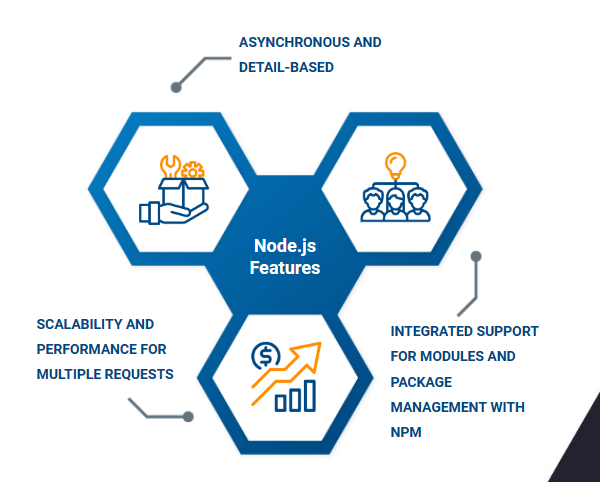When creating a website, we are always faced with a big question: What technology should I use? Due to advances in programming, the market is full of languages and frameworks to work on both the backend and frontend of a website, but there are two that have managed to stand out: Node.Js and React.
“As an event-driven asynchronous JavaScript runtime, Node.js is designed for building scalable network applications. In the following "hello world" example, many connections can be handled at the same time” which is how Node.js is defined in its official documentation.
React, for its part, “allows you to create user interfaces from individual pieces called components. Create your own React components like Thumbnail, LikeButton, and Video. Then combine them into complete screens, pages, and applications.”

When to use Node.js and when to use React?
When deciding between Node.js and React to build a website, it's important to understand that these two technologies serve different purposes and are often used together in a complete development environment. Here's a breakdown of their roles and how they complement each other:
Node.js
- Type: Server-side JavaScript runtime
- Purpose: Handles the backend of a web application.
- Use case: Server-side scripting, handling HTTP requests, working with databases, and delivering content
Key Features of Node.js
- Asynchronous and event-based
- Non-blocking I/O operations
- Integrated support for modules and package management with npm
- Scalability and performance to handle multiple requests simultaneously

React
- Type: Front-end JavaScript library
- Purpose: Handles user interface (UI) and client-side logic.
- Use case: Creating interactive and dynamic user interfaces, especially single-page applications (SPAs)
React Key Features
- Component-based architecture
- Virtual DOM for efficient rendering
- One-way data link
- Broad ecosystem and community support
When to use Node.js
You need to create a backend server to handle business logic, database operations, and serve APIs. Your project involves real-time applications, such as chat applications or live updates. You want a single programming language (JavaScript) for both server-side and client-side development.
When to use React
You need to create a dynamic and interactive user interface. Your project is a single-page application where the user interface needs to be updated frequently without reloading the page. You want to reuse UI components and manage state efficiently within your application.
Combining Node.js and React
For a complete web application, you can use Node.js and React together:
- Backend with Node.js: Create server-side logic, and APIs, and handle data operations.
- Frontend with React – Develop a client-side application that interacts with backend APIs and provides responsive UI.
Example architecture
- Node.js (Backend): A RESTful API built with Express.js (a popular framework for Node.js) to handle requests and interact with a database (such as MongoDB or PostgreSQL).
- React (Frontend): A SPA that gets data from the Node.js API and displays it to the user. React components manage the user interface and user interactions.
Node.js is ideal for creating server-side logic and managing data efficiently, while React excels at developing dynamic and interactive user interfaces. For a complete and robust solution, combining Node.js and React may be the best option, thus taking advantage of the strengths of both technologies.
Choosing between Node.js and React depends on the specific needs of your project. However, it is common to use them together, since this combination allows you to build complete and optimized applications, benefiting from the unique capabilities that each technology offers.
We recommend you on video
